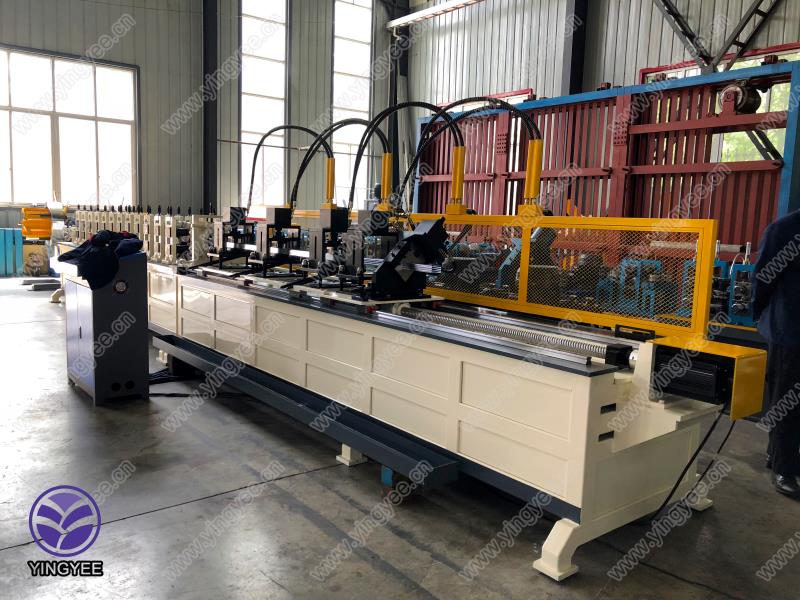
The Evolution and Significance of Cable Tray Roll Forming Machines for 1-3mm Thickness
In the world of industrial manufacturing, efficiency and precision are paramount. One of the critical innovations that have emerged to meet these needs is the cable tray roll forming machine, specifically designed for materials featuring a thickness of 1-3mm. These machines not only streamline the manufacturing process but also enhance the quality and durability of cable trays, which are essential components in various electrical infrastructure projects.
Understanding Cable Trays
Before delving into the mechanics of roll forming machines, it’s essential to grasp what cable trays are and their significance. Cable trays are structures used to support insulated electrical cables. Typically found in industrial environments, commercial buildings, and infrastructures, they play a pivotal role in organizing and managing cable systems. The demand for reliable and durable cable trays has escalated with the growth of modern infrastructure, emphasizing the need for innovative manufacturing solutions.
The Role of Roll Forming Machines
Roll forming is a continuous bending operation in which a long strip of metal, often galvanized steel, is fed through a series of rollers to create a desired cross-sectional shape. For cable trays, the roll forming machine employs a series of precisely engineered rollers to shape the 1-3mm thick metal sheets into the required profile that meets industry standards. These machines are indispensable in producing high-quality cable trays in large volumes while maintaining consistency in shape and size.
Advantages of Using Roll Forming Machines
1. Efficiency Roll forming machines are known for their high production rates. They can operate continuously, making them ideal for large-scale manufacturing operations. A well-optimized machine can produce thousands of feet of cable trays per shift, drastically reducing lead times.
2. Material Utilization These machines are incredibly efficient at material usage. The design of roll forming allows for minimal waste as the metal is shaped without cutting, ensuring that every part of the raw material is utilized to create the final product.

3. Precision and Consistency With the advancements in technology, modern roll forming machines are equipped with automatic controls and digital monitoring systems. This leads to high precision in dimensions, ensuring that each cable tray produced maintains uniform quality, which is crucial for installation efficiency in projects.
4. Cost-Effectiveness Although the initial investment in a roll forming machine can be significant, the long-term savings in labor, material wastage, and production time often outweigh the costs. As manufacturing processes become more refined, the return on investment improves, enabling manufacturers to keep their prices competitive.
5. Versatility Roll forming machines can be configured to produce various profiles, widths, and sizes of cable trays, making them versatile for different applications. They can accommodate various materials, including different grades of steel and specialty alloys, broadening their usability across different sectors.
The Technological Advancements
Recent technological advancements have further revolutionized the operation of cable tray roll forming machines. Features like computer numerical control (CNC) systems enhance accuracy and enable quick setup changes for different product ranges. Automation in feeding, cutting, and stacking also improves the safety and efficiency of the operation, minimizing manual labor and potential errors.
Furthermore, the integration of eco-friendly practices in the manufacturing process has increased. Many modern machines are designed to be energy-efficient, and manufacturers are increasingly focusing on recycling waste materials generated during production, contributing to sustainability efforts.
Conclusion
As the demand for reliable electrical infrastructure continues to grow globally, the role of cable tray roll forming machines becomes increasingly significant. Their ability to produce high-quality products efficiently, while minimizing waste and costs, positions them as essential tools in modern manufacturing. The future of roll forming technology looks promising, with ongoing innovations improving operational capabilities and sustainability. In an industry driven by precision and speed, machines designed for 1-3mm cable tray production will undoubtedly remain at the forefront of industrial advancement. Embracing these technologies not only enhances production capabilities but also ensures that manufacturers can meet the evolving demands of the market.